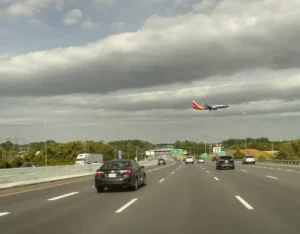The ongoing federal government shutdown is now disrupting U.S. air travel on a large scale, as the Federal Aviation Administration (FAA) has ordered major airlines to reduce flight operations at 40 of the nation’s busiest airports. The move is in response to air traffic controller staffing shortages and safety concerns.
On Friday, November 7, 2025, starting early in the day, airlines canceled at least 700 flights as part of the initial 4 % reduction directive. Some carriers have indicated the cuts may escalate to 6 % early next week and could reach 10 % or higher if the shutdown continues.
Major carriers such as American Airlines, Delta Air Lines, United Airlines and Southwest Airlines are rebooking impacted passengers or offering refunds, but service reductions are already being felt on regional routes and smaller airports.
Causes & Implications
The FAA cited fatigue and rising call‐outs among controllers, many of whom have been working without pay since the shutdown began. Transportation Secretary Sean Duffy warned that the cancellations could rise further, and even reach 20%, if the shutdown persists.
Industry analysts describe the cuts as necessary for safety but warn that disruptions could grow ahead of the busy holiday travel season.
What Travelers Should Know
- Passengers are advised to check flight status via airline apps or airport websites before travel.
- Airlines are required to refund canceled flights, though compensation for hotels or meals is not guaranteed unless the airline is at fault.
- Delays and cancellations are expected to hit smaller airports hardest, as carriers prioritize main hubs.
- With the shutdown ongoing, the risk of expanded disruptions remains, and travelers should plan for a volatile scheduling environment.
Outlook
With Congress still at an impasse and the shutdown now the longest in U.S. history, key federal services, including aviation oversight, are under strain. The aviation sector and travelers alike await congressional action to restore full operations.












